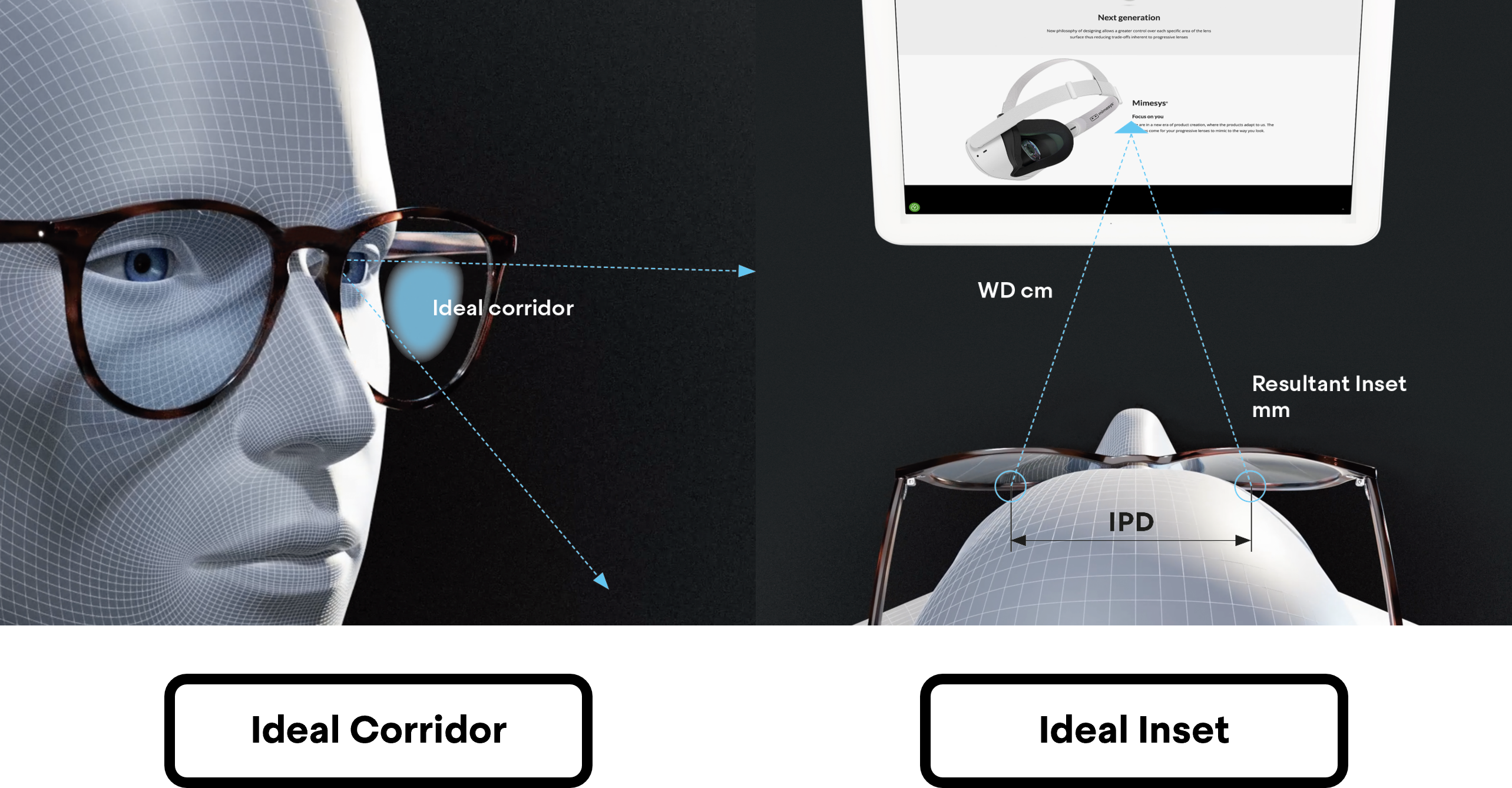INTRODUCTION
In 2023, almost 800 million presbyopes spent most of the day on screens. It is widely recognized that users often experience visual discomfort in their work environment and find it challenging to view the various screens and devices they use in their work routines.
This visual discomfort is called Computer Vision Syndrome (CVS) and the 74,3% of progressive lens wearers suffer from this syndrome. The main user symptoms are:
- Difficulty concentrating during screen work.
- Headache
- Fatigue
- Eyestrain
- Torsional effort
- Next flection
- Physical discomfort
- Tension
Despite the real need of a specific lens for an office environment to avoid the Computer Vision Syndrome (CVS), the reality is that only the 3% of presbyopes use office lens. This is because the patients are not familiar with the product and do not understand it. Furthermore, the ECP sell generic lenses without considering the specific needs or environments, they do not know how to prescribe it, for them it is difficult to awaken the need for office lenses and each manufacturer has a different ordering process, which creates confusion for them.
The study of the most comfortable natural position is crucial to customize a lens dedicated to office work. In office environments, users often demand greater visual comfort and ergonomics to enhance their vision when using different screens and devices.
HORIZONS OPTICAL PRESENTS:
The world’s first office lens where the user customizes their work environment.
The patient chooses the workspace that best suits their reality. For this reason, there is no need to choose distances, regressions or progressions and for the ECP will be easier to order.
Additionally, it presents three very important technical characteristics that make it a completely innovative and unique product:
- Creation of the personalized lens based on gaze dynamics in the customized work environment. The mimesys® map is applied in the creation of the mimesys® Horizons Optical calculates the optimum distance according to the work environment configuration and the mimesys® map.
- Ergopath technology is incorporated to ensure convergence and ergonomically optimal visual posture for each patient.

- In mimesys® Office it is incorporated a degression zone at the top of the lens. Thus, it is increased the maximum focusing distance for objects at far distance.
Thanks to all these technical features, there will be a better understanding of the product’s advantages. With mimesys® Office, the patient chooses the workspace that best suits their reality.
Revolutionizing the shopping experience:
- It provides an unforgettable shopping experience for the customer.
- The customer becomes a co-creator of their own product.
- The customer understands the benefits of having office glasses for their work.
- It demonstrates the lens customization.
Furthermore, mimesys® office ensures the better visual posture, improves the intermediate and near visual fields and eliminates “Computes Vision Syndrome”.
Horizons Optical has carried out an internal study focusing on the mimesys® office user experience. Recorded opinions concluded that:
- 100% of the users consider that the test meets their expectations.
- 100% of the users would be willing to purchase a second pair of glasses for the office.
- 94% of the users understand the performance of the test.
- 9,25 is the average rating of the experience.
References
Horizons Optical
Mar Sánchez-Brau et al. Prevalence of Computer Vision Syndrome and Its Relationship with Ergonomic and Individual Factors in Presbyopic VDT Workers Using Progressive Addition Lenses, Int J Environ Res Public Health (2020 Feb). 5;17(3):1003. doi: 10.3390/ijerph17031003.
Sandra Milena Medrano Muñoz. Ciencia y Tecnología para la Salud Visual y Ocular. Vol. 7 / Nº 1:83-93 /Enero –junio de 2009. Lovasik & Kergoat, 1988; Hayes et ál., 2007
Sterner, 2006; Iribarren, 2002; Sheedy & Parsons, 1990. The effect of using a laptopstation compared to using a standard laptop PC on the cervical spine torque, perceived strain and productivity Vol. 35/Issue 2 (March 2004); A Lindblad et al.


